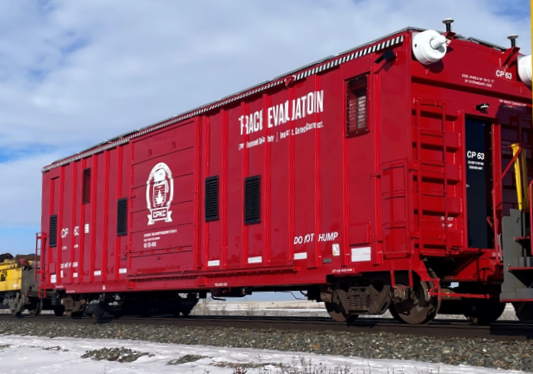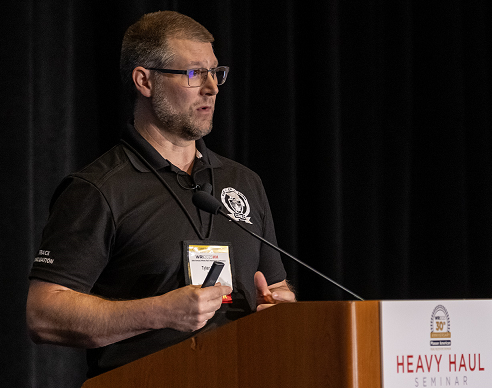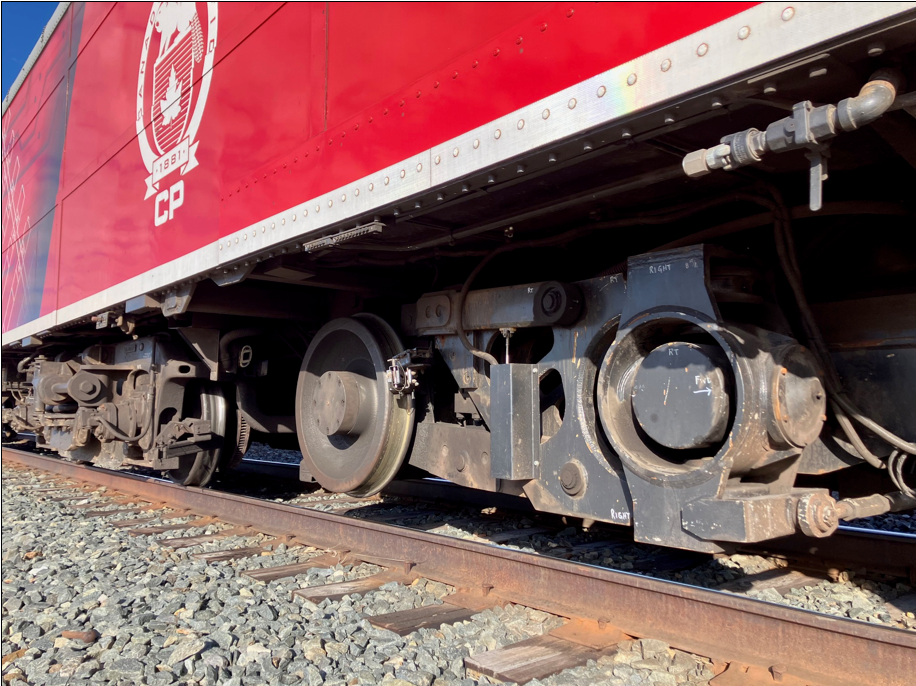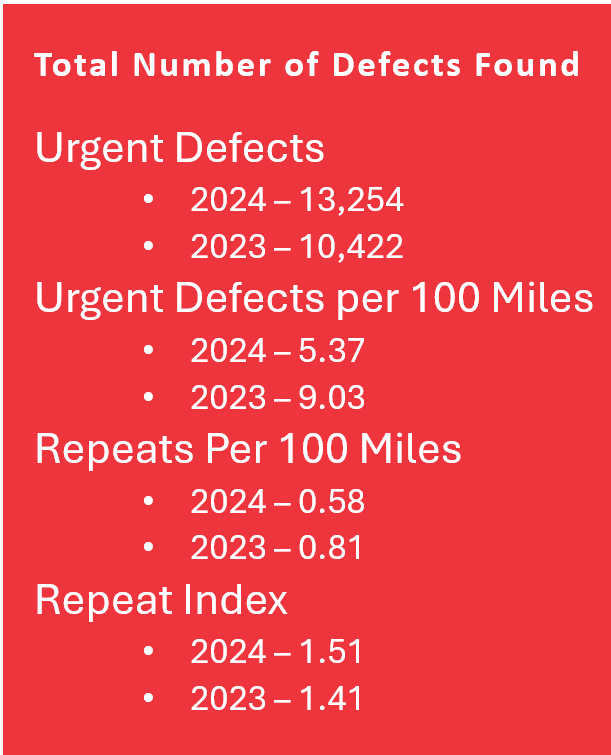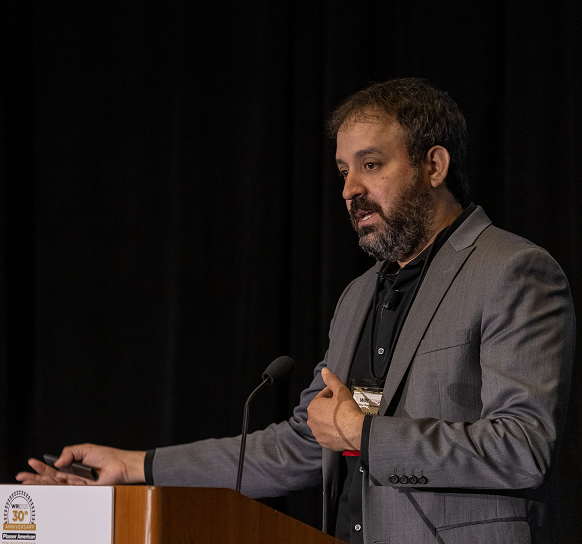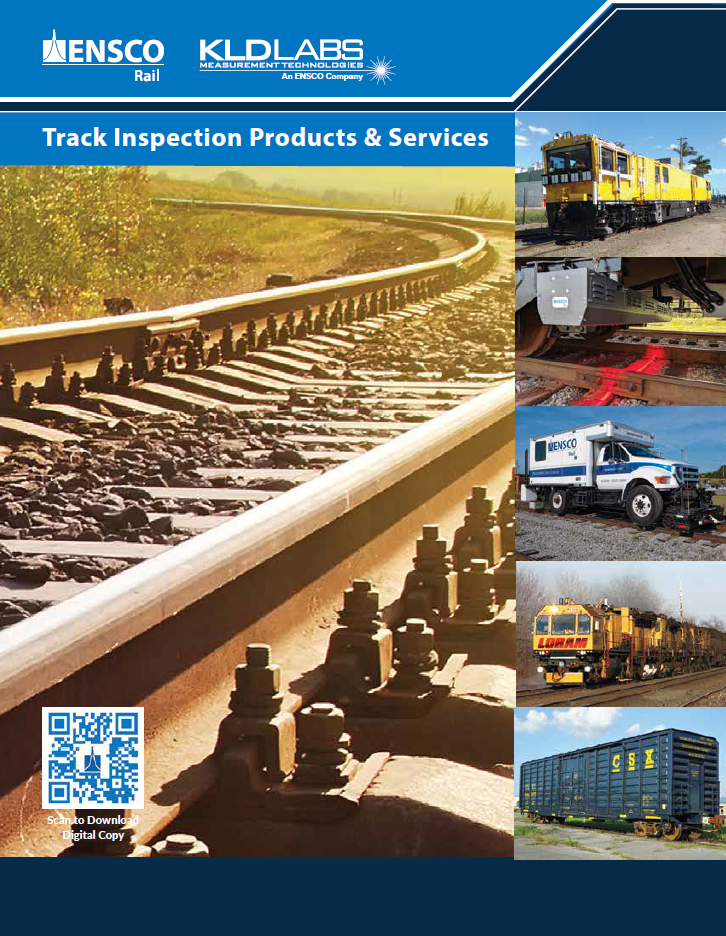Autonomous Inspection on CPKC and the Future of Track Inspection
by Jeff Tuzik
Track geometry inspection has always been an intrinsic part of railroading. That hasn’t changed and never will. But the way inspections are performed and the data they yield is changing rapidly. Automation is one of the biggest factors in the change, but the sophistication of inspection technologies and data management techniques are also contributors. This combination of factors allows railroads like Canadian Pacific Kansas City (CPKC) to collect more data in more locations with greater accuracy and objectivity than ever before.
CPKC has a well-developed but ever-evolving track geometry inspection program. It includes traditional visual inspection by track inspectors, as well as manned and autonomous track inspection vehicles. “Prior to the CP/KCS merger, CP did all of its track geometry testing in-house,” Tyler Kerr, Manager of Track Evaluation at CPKC, told attendees of the 2025 Heavy Haul Wheel/Rail Interaction Conference. “KCS, on the other hand, contracted out most of their geometry testing.” Since the merger, CPKC has expanded their in-house geometry inspection program to cover the majority of the network, which now spans ≈20,000 miles of track from Mexico to Canada, British Columbia to New Brunswick.
The Fleet
CPKC’s track geometry measurement fleet is comprised of five autonomous track geometry measurement system (ATGMS) cars, with a sixth going into service shortly, six hi-rail vehicles (two heavy trucks and four light trucks), and one manned track evaluation train (TEC92), Kerr said.
Of the manned inspection vehicles, the TEC92 consist is equipped with the widest range of inspection technologies. Its capabilities include: geometry and profile measurement, gage-restraint measurement, rail surface imaging, joint bar imaging, and track component imaging. “The deployable gage-restraint measurement system is one of the most important parts of the system,” Kerr said. This deployable 5th axle applies 40,000 lbs of downward force and 14,000 lbs of outward or gage-spreading force. This measures the track’s gage restraint and also provides the opportunity to measure differences in track geometry between a loaded and unloaded state, he said.
The “heavy” hi-rail vehicles measure track geometry and rail profile, and the four “light” hi-rail vehicles measure only track geometry. “The hi-rail trucks have been instrumental in the way we do things; they offer flexibility, since they can get to specific locations that need attention much faster than a train.”
The autonomous inspection fleet is made up of four “conventional” boxcars, three of which measure track geometry, and one of which measures geometry and rail profile. There are also two so-called “Total Track Assessment” boxcars, which are equipped with track geometry measurement systems as well as machine vision and lidar imaging systems.
CPKC’s geometry measurement fleet measured a total of 311,554 miles of track in 2024. In 2023, that number was only 118,000 miles; “We’ve changed our strategy and approach to testing, particularly with regard to the ATGMS program,” Kerr said. “We used to be very selective about where these cars went.” But in 2024, CPKC decided to attach three ATGMS cars to intermodal service trains which cover most of the network in a single week. This vastly expanded their coverage and data intake.
Figure 2 shows select geometry defect statistics for 2023 and 2024. “Our urgent defects went up in 2024 [from 10,422 to 13,254], but we’re testing a lot more track, so it’s expected,” Kerr said. However, both urgent defects per 100 miles and repeat defects per 100 miles both fell (from 9.03 to 5.37 and 0.81 to 0.58, respectively), indicating an overall improvement in track geometry condition.
An Evolving System
In addition to data from the track inspection fleet, CPKC also collects data from 12 vehicle/track interaction (VTI) monitors in operation throughout the system. These systems, which measure parameters like carbody accelerations, truck lateral accelerations, axle impacts, and 10-foot mid-cord offsets, provide an additional layer of data on track condition that can be helpful in prioritizing maintenance or issuing slow orders, said Rafael Maldonado, Deputy Division Manager at ENSCO Rail.
CPKC is working with ENSCO to further leverage their VTI data by focusing on patterns in the data. “A VTI monitor might send out one critical alert a week but record 30,000 exceptions. Obviously, those exceptions aren’t manageable, but there’s value in the data,” Maldonado said. Certain patterns and combinations of low-level VTI exceptions that may presage a more serious or catastrophic event can be identified by a so-called combo cluster algorithm, he said. Identifying these locations can help guide inspectors and future maintenance efforts even if there isn’t a defect present that exceeds an FRA or Transport Canada threshold.
On another front, CPKC is currently in the pilot stage of programs aimed at automating both tie and joint bar inspection. Both of these systems are machine vision-based. In addition to the real-time flaw detection they provide, the data they collect will be used to build an inventory and classification system for these components, CPKC’s Kerr said.
CPKC is also exploring rail surface imaging. This system images the rail from the top down and assigns numerical values based on surface damage type, location, and severity. This enables analyses, trending, and most importantly objectivity that traditional visual inspection cannot provide, Kerr said. The significant commonality between these machine vision systems (tie inspection, joint bar inspection, rail surface imaging) is the goal of turning subjective visual data into quantifiable metrics.
Big Data
Inspection vehicles and systems that cover a lot of ground generate a lot of data. With over 300,000 miles of tested track and multiple data streams, it’s easy to see how ATGMS data would be overwhelming without the right data management and software tools in place to turn the data into understandable, actionable information.
CPKC uses many applications, some developed in-house, some vendor-sourced, to manage its ATIP data. Among these, there are three primary applications they use to manage, access, and visualize data: Track Asset Management (TAM), which CPKC developed in-house, is used to schedule and record visual inspections, defects, maintenance actions and repairs. ENSCO’s Digital Track Notebook® (DTN) is primarily used by track inspectors to log and track defects and maintenance. ENSCO’s TrackIT® is a platform that stores and displays inspection data from multiple systems, (and thus of multiple types) aligned to a unified location. “Just as you don’t want your teams to operate in silos, you don’t want your data in silos either,” ENSCO’s Rafael Maldonado said. “So, it’s critical to have a centralized location, like TrackIT, to ensure that your datasets are in sync.”
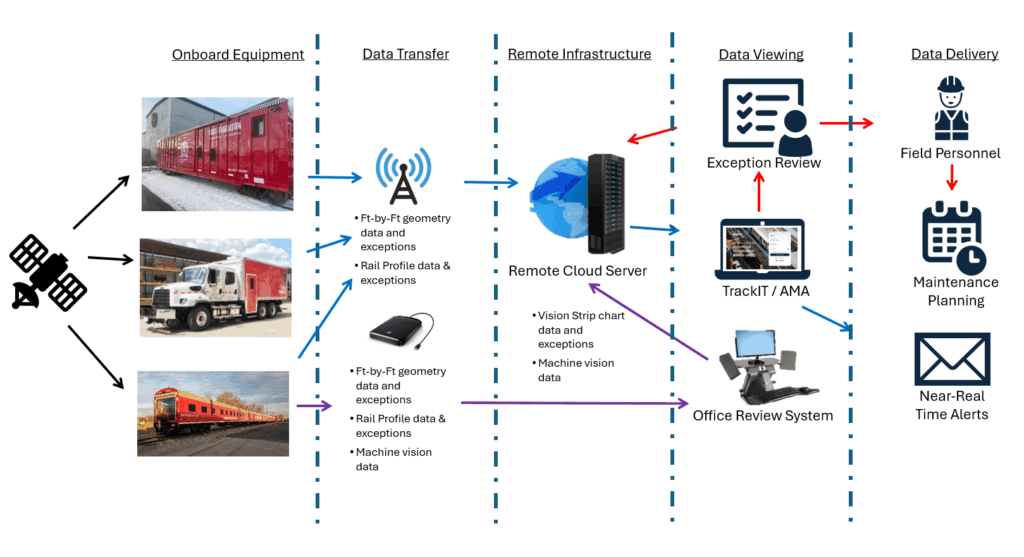
One of the challenges with collecting so much data at such a high rate, is knowing what to act on and when to act on it. The last thing any railroad wants is for a critical defect data to get lost in a sea of less critical data. “On CPKC, when a defect rises to an urgent level, typically based on FRA or Transport Canada thresholds, an alert is automatically sent out to the field so someone can review it and take whatever action is needed,” Maldonado said.
But human review of the data is still an important component of autonomous programs; trained analysts who understand the data can weed out false positives, bad data, errors and malfunctions, and in doing so improve the alert algorithm’s future accuracy, he said.
As CPKC moves forward with its many ATIP initiatives, numerous challenges remain, despite the successes. At present, regulatory bodies like the FRA and TC do not allow these technologies to be used in lieu of traditional track geometry inspection, except in cases where special waivers have been issued. So, despite the wealth of data CPKC’s autonomous vehicles collect, they must still satisfy regulatory requirements. There is also the fact that many autonomous technologies, particularly those based on machine vision, are still proving themselves—it will likely be some time before such systems are as trusted and as ubiquitous as WILD systems, for example. Nonetheless, CPKC’s ATIP projects demonstrate that autonomous inspection systems are already transforming track inspection, and therefore changing the ways in which the railroad industry goes about its business.

Jeff Tuzik is Managing Editor of Interface Journal
This article is based on a presentation made at the 2025 Wheel/Rail Interaction Heavy Haul conference.
All images are courtesy of CPKC except where otherwise noted.

